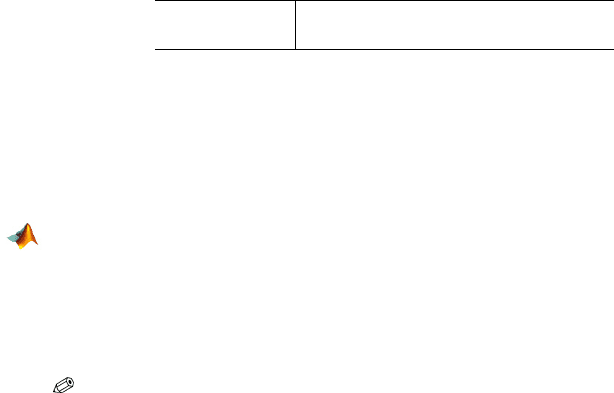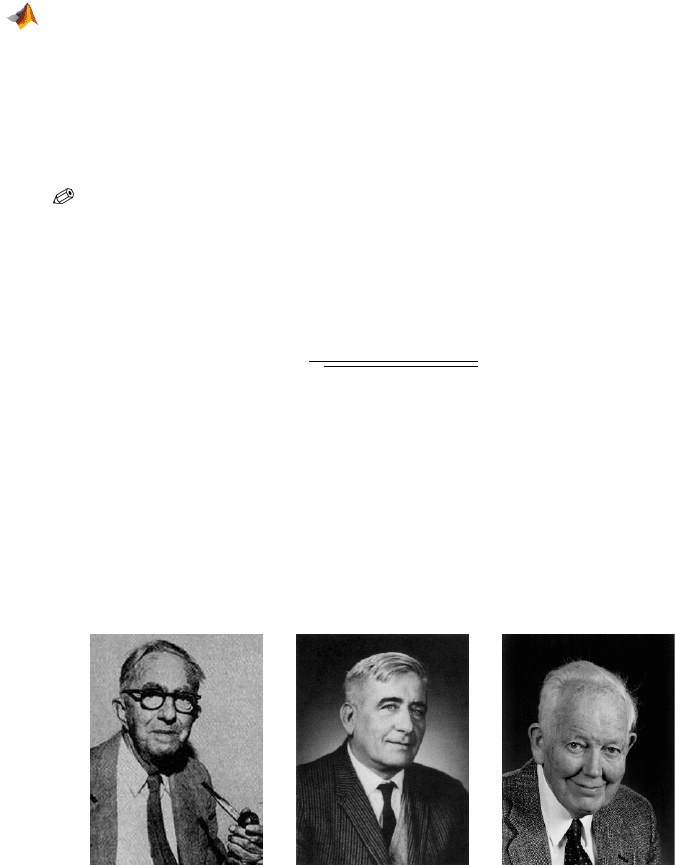Vidakovic B. Statistics for Bioengineering Sciences: With Matlab and WinBugs Support
Подождите немного. Документ загружается.


12.2 Sign Test 479
number of + is equal to
T
=
n
X
i=1
1(X
i
> m
0
)
and has a binomial distribution with parameters n and 1/2.
Let the level of the test,
α, be specified. When the alternative is H
1
: med >
m
0
, the critical values of T are integers greater than or equal to k
α
, which is
defined as the smallest integer for which the relationship
n
X
t=k
α
Ã
n
k
!
µ
1
2
¶
n
<α
holds.
Likewise, if the alternative is H
1
: med < m
0
, the critical values of T are
integers less than or equal to k
0
α
, which is defined as the largest integer for
which the relationship
k
0
α
X
t=0
Ã
n
k
!
µ
1
2
¶
n
<α
holds.
If the alternative is two-sided, i.e., H
1
: med 6= m
0
, the critical values of T
are integers less than or equal to k
0
α/2
and greater than or equal to k
α/2
, which
are defined, respectively, as the largest and smallest integers for which the
inequalities
k
0
α/2
X
t=0
Ã
n
k
!
µ
1
2
¶
n
<α/2, and
n
X
t=k
α/2
Ã
n
k
!
µ
1
2
¶
n
<α/2
hold.
If the value T is observed, then in testing against the alternative H
1
:
med
> m
0
, large values of T are critical and the p-value is p =
P
n
i
=T
¡
n
i
¢
2
−n
=
P
n−T
i
=0
¡
n
i
¢
2
−n
. When testing against the alternative H
1
: med < m
0
, small val-
ues of T are critical and the p-value is p
=
P
T
i
=0
¡
n
i
¢
2
−n
. When the alternative
is two-sided, the p-value is p
=2
P
T
0
i=0
¡
n
i
¢
2
−n
for T
0
=min{T, n −T}.
Alternative p-value
H
1
: med > m
0
P
n
i
=T
¡
n
i
¢
2
−n
H
1
: med 6= m
0
2
P
T
0
i=0
¡
n
i
¢
2
−n
for T
0
=min{T, n −T}
H
1
: med < m
0
P
T
i
=0
¡
n
i
¢
2
−n

480 12 Distribution-Free Tests
Consider now the two-paired-sample case, and suppose that the samples
X
1
,... , X
n
and Y
1
,... , Y
n
are observed. We are interested in knowing whether
the population median of the differences X
1
−Y
1
, X
2
−Y
2
,... , X
n
−Y
n
is equal
to 0. In this case, T
=
P
n
i
=1
1(X
i
> Y
i
), is the total number of strictly positive
differences.
Although it is true that the hypothesis of equality of means is equivalent
to the hypothesis that the mean of the differences is 0, for the medians an
analogous statement is not true in general. More precisely, if D
= X −Y , then
med(D) may not be equal to med(X )
−med(Y ). Thus, with the sign test we are
not testing the equality of medians, but whether the median of the differences
is 0.
Ties complicate the calculations but can be handled. Even when observa-
tions come from a continuous distribution, ties appear due to limited precision
in the application part. There are several ways of dealing with ties:
(i) Ignore them. If there are s ties, use only the “untied” observations. Of
course, the sample size drops to n
−s.
(ii) Assign the winning sign to tied pairs. For example, if there are two
minuses, two ties, and six pluses, consider the two ties as pluses.
(iii) Randomize. If you have two ties, flip a coin twice and assign a plus if
the coin lands heads and minus if the coin lands tails.
In script
signtst.m conducting the sign test (not to be mixed with MAT-
LAB’s built in
signtest), the options for handling ties are: I, C, and R, for poli-
cies in (i)-(iii).
Example 12.1. TCDD Levels. Many Vietnam veterans have dangerously
high levels of the dioxin 2,3,7,8-TCDD in their blood and fat tissue as a result
of their exposure to the defoliant Agent Orange. A study published in Chemo-
sphere (vol. 20, 1990) reported on the TCDD levels of 20 Massachusetts Viet-
nam veterans who had possibly been exposed to Agent Orange. The amounts
of TCDD (measured in parts per trillion) in blood plasma and fat tissue drawn
from each veteran are shown in the table below.
TCDD levels in plasma TCDD levels in fat tissue
2.5 3.1 2.1 4.9 5.9 4.4
3.5 3.1 1.8
6.9 7.0 4.2
6.8 3.0 36.0
10.0 5.5 41.0
4.7 6.9 3.3
4.4 7.0 2.9
4.6 1.6 7.2
4.6 1.4 7.7
1.8 20.0 2.0
1.1 11.0 2.5
2.5 4.1
2.3 2.5
Is there sufficient evidence of a difference between the distributions of TCDD
levels in plasma and fat tissue for Vietnam veterans exposed to Agent Orange?
Use the sign test and
α =0.10.

12.3 Ranks 481
tcddpla = [2.5 3.1 2.1 3.5 3.1 1.8 6.8 3.0 36.0 ...
4.7 6.9 3.3 4.6 1.6 7.2 1.8 20.0 2.0 2.5 4.1];
tcddfat = [4.9 5.9 4.4 3.5 7.0 4.2 10.0 5.5 41.0 ...
4.4 7.0 2.9 4.6 1.4 7.7 1.8 11.0 2.5 2.3 2.5];
% ignore ties
[pvae, pvaa, n, plusses, ties] = signtst(tcddpla, tcddfat)
%pvae =0.1662
%pvaa =0.1660
%n =17
%plusses =6
%ties =3
% randomize ties
[pvae, pvaa, n, plusses, ties] = signtst(tcddpla, tcddfat,’R’)
% pvae =0.2517
% take the conservative, least favorable approach
[pvae, pvaa, n, plusses, ties] = signtst(tcddpla, tcddfat,’C’)
% pvae =0.0577
Overall, the sign test failed to find significant differences between the dis-
tributions of TCDD levels. Only the conservative assignment of ties (least fa-
vorable to H
0
) produced p-value of 0.0577, significant at α = 10% level. Com-
pare these results with MATLAB’s built-in function
signtest.
12.3 Ranks
Let X
1
, X
2
,... , X
n
be a sample from a population with a continuous distri-
bution F. Many distribution-free procedures are based on how observations
within the sample are ranked compared to either a parameter
θ or to another
sample. The ranks of a sample X
1
, X
2
,... , X
n
are defined as indices of ordered
sample
r(X
1
), r(X
2
),... , r(X
n
).
For example,
ranks([10 20 25 7])
%ans = 2 3 4 1
The function ranks.m is
function r = ranks(data, glob)
%--------------------------------------
if nargin < 2
glob = 1;
end

482 12 Distribution-Free Tests
shape = size(data);
if glob == 1
data=data(:);
end
% Ties ranked from UptoDown
[ irrelevant , indud ] = sort(data);
[ irrelevant , rUD ] = sort(indud);
% Ties ranked from RtoL
[ irrelevant , inddu ] = sort(flipud(data));
[ irrelevant , rDU ] = sort(inddu);
% Averages ranks of ties, keeping ranks
% of no-tie-observations the same
r = (rUD + flipud(rDU))./2;
r = reshape(r,shape);
For example, when the input is a matrix, the optional parameter glob = 1
produces global ranking, while for glob not equal to 1, columnwise ranking is
performed.
%a =
% 0.8147 0.9134 0.2785 0.9649
% 0.9058 0.6324 0.5469 0.1576
% 0.1270 0.0975 0.9575 0.9706
ranks(a)
% ans =
% 7 9 4 11
% 8 6 5 3
% 2 1 10 12
ranks(a,2)
% ans =
% 2 3 1 2
% 3 2 2 1
% 1 1 3 3
In the case of ties, it is customary to average the tied rank values. The
script
ranks.m does just that:
ranks([2 1 7 1 15 9])
%ans = 3.0000 1.5000 4.0000 1.5000 6.0000 5.0000
Here r(2) = 3, r(1) = 1.5, r(7) =4, and so on. Note that 1 appears twice and
ranks 1 and 2 are averaged. In the case
ranks([9 1 7 1 9 9])
%ans = 5.0000 1.5000 3.0000 1.5000 5.0000 5.0000
the ranks of three 9s are 4, 5, and 6, which are averaged to 5.
Suppose that a random sample from continuous distribution X
1
,... , X
n
is
ranked and that R
i
= r(X
i
), i = 1,. .., n are the ranks. Ranks R
i
are random
variables with discrete uniform distribution (p. 141). The properties of integer
sums lead to the following properties for ranks:

12.4 Wilcoxon Signed-Rank Test 483
E(R
i
) =
n
X
j=1
j
n
=
n +1
2
,
E(R
2
i
) =
n
X
j=1
j
2
n
=
n(n +1)(2n +1)
6n
=
(n +1)(2n +1)
6
Var (R
i
) =
n
2
−1
12
.
These relationships follow from the fact that for a random sample, ranks are
distributed as discrete uniform, namely, for any i,
P(R
i
= j) =
1
n
, 1
≤ j ≤n.
12.4 Wilcoxon Signed-Rank Test
More powerful than the sign test is Wilcoxon’s signed-rank test (Wilcoxon,
1945), where, in addition to signs, particular ranks are taken into account.
Let the paired sample (X
i
,Y
i
), i = 1,..., n be observed and let D
i
= X
i
−
Y
i
, i =1,..., n be the differences. In a two-sample problem, we are interested
in testing that the true mean of the differences is 0.
It is also possible to consider a one-sample scenario in which testing the
hypothesis about the median med is of interest. Here H
0
: med = m
0
is tested
versus the one- or two-sided alternative. Then observations X
i
, i =1, . .., n are
compared to m
0
, and the differences are D
i
= X
i
−m
0
, i =1, . .., n.
The only assumption is that the distribution of the differences D
i
, i =
1,... , n is symmetric about 0. This implies that positive and negative differ-
ences are equally likely. For this test, the absolute values of the differences
(
|D
1
|,|D
2
|,... , |D
n
|) are ranked. Let r(|D
1
|), r(|D
2
|),..., r(|D
n
|) be the ranks of
the differences.
Under H
0
, the expectations of the sum of positive differences and the sum
of negative differences should be equal. Define
W
+
=
n
X
i=1
S
i
r(|D
i
|)
and
W
−
=
n
X
i=1
(1 −S
i
) r(|D
i
|),

484 12 Distribution-Free Tests
where S
i
= 1 if D
i
> 0 and S
i
= 0 if D
i
< 0. Cases where D
i
= 0 are ties and
are ignored. Thus, W
+
+W
−
is the sum of all ranks, and in the case of no ties
is equal to
P
n
i
=1
i = n(n +1)/2. The statistic for the WSiRT is the difference
between the ranks of positive differences and ranks of negative differences:
W
=W
+
−W
−
=2
n
X
i=1
r(|D
i
|)S
i
−n(n +1)/2.
Rule: For the WSiRT, it is suggested that a large-sample approximation
should be used for W. If the samples are from the same population, the differ-
ences should be well mixed, and the sum of the ranks of positive differences
should be close to the sum of the ranks of negative differences. Thus, in this
case,
E(W) = 0 and Var (W) =
P
i
(r(|D
i
|)
2
) =
P
i
i
2
= n(n +1)(2n +1)/6 under H
0
and no ties in differences. The statistic
Z
=
W
p
Var (W)
has an approximately standard normal distribution, so
normcdf can be used to
evaluate the p-values of the observed statistic W with respect to a particular
alternative (see the m-file
wsirt.m).
function [W, Z, p] = wsirt( data1, data2, alt )
% -----------------------------------------------------
% WILCOXON SIGNED RANK TEST
% Input: data1, data2 - first and second sample
% alt - code for alternative hypothesis;
% -1 mu1<mu2; 0 mu1 ne mu2; and 1 mu1>mu2
% Output: W - sum of all signed ranks
% Z - standardized W but adjusted for the ties
% p - p-value for testing equality of distribs
% (equality of locations) against the
% alternative specified by the input alt
% Example of use:
% > dat1=[1 3 2 4 3 5 5 4 2 3 4 3 1 7 6 6 5 4 5 8 7];
% > dat2=[2 5 4 3 4 3 2 2 1 2 3 2 3 4 3 2 3 4 4 3 5];
% > [srs, tstat, pval] = wsirt(dat1, dat2, 1)
%
% Needs: M-FILE ranks.m (ranking procedure)
%------------------------------------------------------
data1 = data1(:)’ ; % convert sample 1 to a row vector
data2 = data2(:)’ ; % convert sample 2 to a row vector
if length(data1) ~= length(data2)
error(’Sample sizes should coincide’)
end
difs = data1 - data2;
difs = difs( difs ~= 0); % exclude ties
rank
_
all = ranks(abs(difs));
signs = 2.
*
(difs > 0)-1;
sig
_
ranks = signs .
*
rank
_
all;
W = sum( sig
_
ranks ); %sum of all signed ranks

12.4 Wilcoxon Signed-Rank Test 485
W2 = sum( ( sig
_
ranks.^2 ) );
Z = W/sqrt(W2);
cc = 1/sqrt(W2); %continuity correction
%-------------------------- alternatives -------------
% alt == 0 for two sided;
% alt == -1 for mu1 < mu2; alt == 1 for mu1 > mu2.
if alt == 0
p = 2
*
normcdf(-abs( Z ) + cc);
elseif alt == -1
p = normcdf( Z + cc);
elseif alt == 1
p = normcdf( -Z + cc);
else
error(’Input "alt" should be either 0,-1,or 1.’)
end
Example 12.2. Identical Twins. This data set was discussed in Conover
(1999). Twelve pairs of identical twins underwent psychological tests to mea-
sure the amount of aggressiveness in each person’s personality. We are inter-
ested in comparing the twins to each other to see if the first-born twin tends to
be more aggressive than the other. The results are as follows (the higher score
indicates more aggressiveness).
First-born, X
i
86 71 77 68 91 72 77 91 70 71 88 87
Second twin, Y
i
88 77 76 64 96 72 65 90 65 80 81 72
The hypotheses are: H
0
: the mean aggressiveness scores for the two twins
are the same, that is,
E(X
i
) = E(Y
i
), and H
1
: the first-born twin tends to be
more aggressive than the other, i.e.,
E(X
i
) > E(Y
i
). The WSiRT is appropriate
if we assume that D
i
= X
i
−Y
i
are independent and symmetric. Below is the
output of
wsirt, where the T statistic has been used.
fb = [86 71 77 68 91 72 77 91 70 71 88 87];
sb = [88 77 76 64 96 72 65 90 65 80 81 72];
[w1, z1, p] = wsirt(fb, sb, 1)
%w1 = 17 %value of T
%z1 = 0.7565 %value of Z
%p = 0.2382 %p-value of the test
Note that the test failed to reject H
0
.
The WSiRT can be used to test the hypothesis of location H
0
: µ =µ
0
using
a single sample, as in a one-sample t-test. The differences in the WSiRT are
X
1
−µ
0
, X
2
−µ
0
,... , X
n
−µ
0
instead of X
1
−Y
1
, X
2
−Y
2
,... , X
n
−Y
n
, as in the
two-sample WSiRT.
Example 12.3. In the Moon Illusion (Example 9.4), we tested H
0
: µ =1 against
H
1
: µ >1.

486 12 Distribution-Free Tests
moon = [1.73 1.06 2.03 1.40 0.95 1.13 1.41 1.73 1.63 1.56];
mu0 = 1;
mu0vec = mu0
*
ones(size(moon));
[w, z, p]=wsirt(moon, mu0vec, 1)
%w = 53
%z = 2.7029
%p = 0.0040
Compared to the t-test where the p-value was found to be pval = 9.9885e-04,
the WSiRT still rejects H
0
even though the p-value is higher, p = 0.004.
Equivalently, the WSiRT can be based on the sum of the ranks of posi-
tive differences only (or, equivalently, the sum of the ranks of negative dif-
ferences only). In that case, under H
0
, EW
+
= n(n +1)/4 and Var (W
+
) =
n(n +1)(2n +1)/24, leading to
Z
=
W
+
−n(n +1)/4
p
n(n +1)(2n +1)/24
.
12.5 Wilcoxon Sum Rank Test and
Wilcoxon–Mann–Whitney Test
The Wilcoxon sum rank test (WSuRT) and Wilcoxon–Mann–Whitney test
(WMW) are equivalent tests and we will discuss only the former, WSuRT. The
tests are named after statisticians shown in Fig. 12.1a-c.
(a) (b) (c)
Fig. 12.1 (a) Frank Wilcoxon (1892–1965), (b) Henry Berthold Mann (1905–2000), and (c)
Donald Ransom Whitney (1915–2001).
The WSuRT is often used in place of a two-sample t-test when the popula-
tions being compared are independent, but possibly not normally distributed.

12.5 Wilcoxon Sum Rank Test and Wilcoxon–Mann–Whitney Test 487
An example of the sort of data for which this test could be used is responses
on a Likert scale (e.g., 1 = much worse, 2 = worse, 3 = no change, 4 = better,
5 = much better). It would be inappropriate to use the t-test for such data be-
cause for ordinal data the normality assumption does not hold. The WSuRT
tells us more generally whether the groups are homogeneous or if one group is
“better’ than the other. More generally, the basic null hypothesis of the WSuRT
is that the two populations are equal. That is, H
0
: F
X
(x) = F
Y
(x). When stated
in this way, this test assumes that the shapes of the distributions are similar,
which is not a stringent assumption.
Let X
= X
1
,... , X
n
1
and Y = Y
1
,... , Y
n
2
be two samples of sizes n
1
and n
2
,
respectively, from the populations that we want to compare. Assume that the
samples are put together and that n
= n
1
+ n
2
ranks are assigned to their
concatenation. The test statistic W
n
is the sum of ranks (1 to n) corresponding
to the first sample, X. For example, if X
1
= 1, X
2
= 13, X
3
= 7, X
4
= 9, and
Y
1
=2,Y
2
=0,Y
3
=18, then the value of W
n
is 2 +4 +5 +6 =17.
If the two populations have the same distribution, then the sum of the
ranks of the first sample and those in the second sample should be close, rela-
tive to their sample sizes. The WSuRT statistic is
W
n
=
n
X
i=1
iS
i
(X ,Y ),
where
S
i
(
X
,
Y
) is an indicator function defined as 1 if the
i
th ranked obser-
vation is from the first sample and as 0 if the observation is from the second
sample.
For example, for X
1
= 1, X
2
= 13, X
3
= 7, X
4
= 9 and Y
1
= 2,Y
2
= 0,Y
3
= 18,
S
1
=0, S
2
=1, S
3
=0, S
4
=1, S
5
=1, S
6
=1, S
7
=0. Thus
W
n
=1 ×0 +2 ×1 +3 ×0 +4 ×1 +5 ×1 +6 ×1 +7 ×0 =2 +4 +5 +6 =17.
If there are no ties, then under H
0
E(W
n
) =
n
1
(n +1)
2
and
Var (W
n
) =
n
1
n
2
(n +1)
12
.
The statistic W
n
achieves its minimum when the first sample is entirely
smaller than the second, and its maximum when the opposite occurs:
minW
n
=
n
1
X
i=1
i =
n
1
(n
1
+1)
2
, maxW
n
=
n
X
i=n−n
1
+1
i =
n
1
(2n −n
1
+1)
2
.
For the statistic W
n
a normal approximation holds:
W
n
∼N
µ
n
1
(n +1)
2
,
n
1
n
2
(n +1)
12
¶
.

488 12 Distribution-Free Tests
A better approximation is
P(W
n
≤w) ≈Φ(x) +φ(x)(x
3
−3x)
n
2
1
+n
2
2
+n
1
n
2
+n
20n
1
n
2
(n +1)
,
where
φ(x) and Φ(x) are the PDF and CDF of a standard normal distribu-
tion, respectively, and x
= (w −E(W
n
) +0.5)/
p
Var (W
n
). This approximation is
satisfactory for n
1
>5 and n
2
>5 if there are no ties.
function [W, Z, p] = wsurt( data1, data2, alt )
% --------------------------------------------------------
% WILCOXON SUM RANK TEST
% Input: data1, data2 - first and second sample
% alt - code for alternative hypothesis;
% -1 mu1<m2; 0 mu1 ne m2; and 1 mu1>mu2
% Output: W - sum of the ranks for the first sample. If
% there is no ties, the standardization by ER &
% Var R allows using standard normal quantiles
% as long as sample sizes are larger than 15-20.
% Z - standardized R but adjusted for the ties
% p - p-value for testing equality of distributions
% (equality of locations) against the alternative
% specified by input "alt"
% Example of use:
% > dat1=[1 3 2 4 3 5 5 4 2 3 4 3 1 7 6 6 5 4 5 8 7 3 3 4];
% > dat2=[2 5 4 3 4 3 2 2 1 2 3 2 3 4 3 2 3 4 4 3 5];
% > [sumranks1, tstat, pval] = wsurt(dat1, dat2, 1)
%
% Needs: M-FILE ranks.m (ranking procedure)
%-----------------------------------------------------------
data1 = data1(:)’ ; %convert sample 1 to a row vector
n1 = length( data1 ); %n1 - size of first sample, data1
data2 = data2(:)’ ; %convert sample 2 to a row
n2 = length( data2 ); %n2 - size of second sample, data2
n =n1+ n2; %n is the total sample size
mergeboth = [ data1 data2 ];
ranksall = ranks( mergeboth ); %ranks of merged observations
W2 = sum( ( ranksall.^2 ) ); %sum of all ranks squared
% needed to make adjustment for the ties; if no ties are
% present, this sum is equal to the sum of squares of the
% first n integers: n(n+1)(2 n+1)/6.
ranksdata1 = ranksall( :, 1:n1); %ranks of first sample
W = sum( ranksdata1 ); % statistic for WMW
%--------------------------------------------------------
Z = (W - n1
*
(n+1)/2 )/sqrt( n1
*
n2
*
W2/(n
*
(n-1)) ...
- n1
*
n2
*
(n+1)^2/(4
*
(n-1)));
% Z is approximately standard normal and approximation is
% quite good if n1,n2 > 15. Since W ranges over integers
% and half integers, a continuity correction, cc, may be
% used for improving the accuracy of p-values.
cc = 0.25/sqrt( n1
*
n2
*
W2/(n
*
(n-1)) - ...
n1
*
n2
*
(n+1)^2/(4
*
(n-1)));
